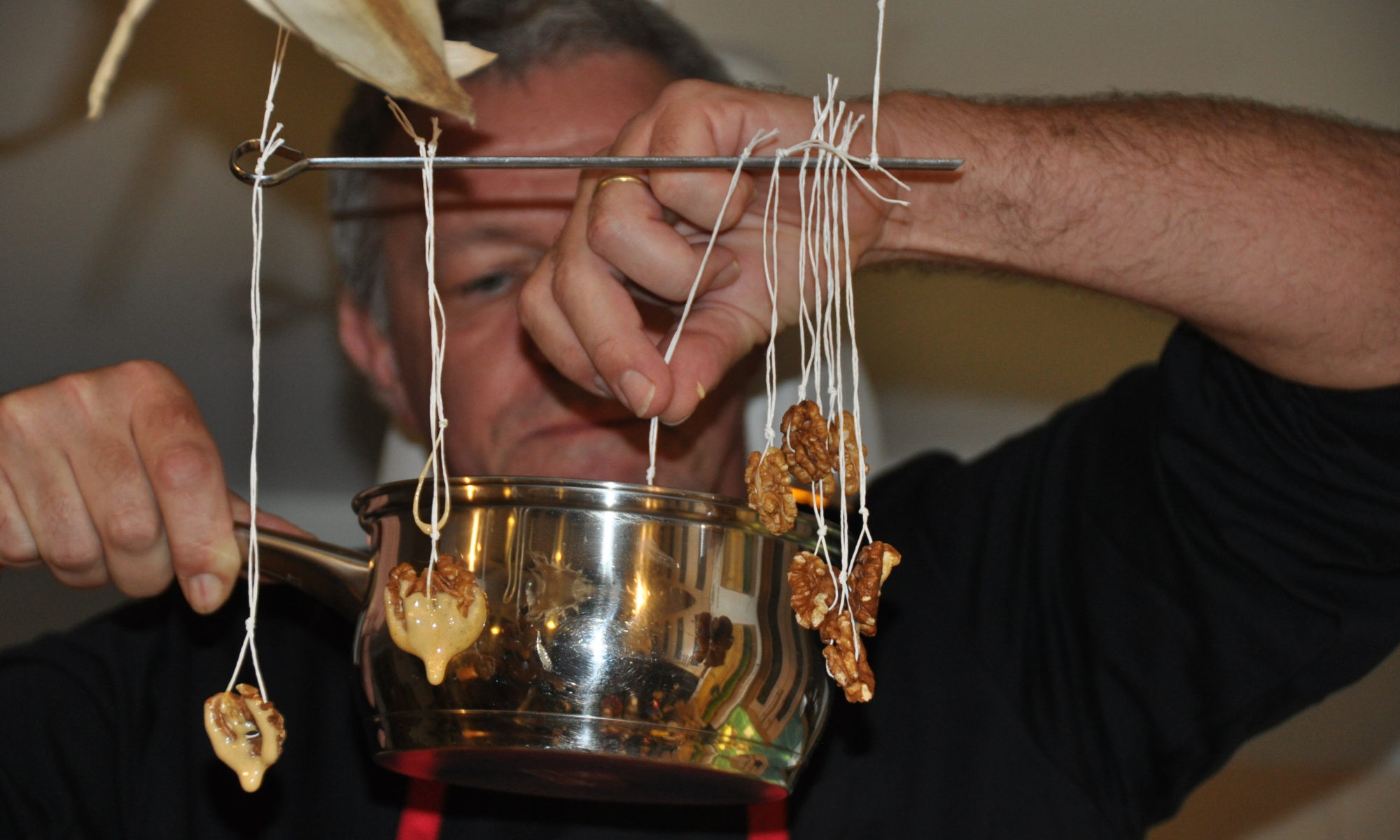 A delicious juicy pork roast with sage and apples. Perfect for autumn.
A delicious juicy pork roast with sage and apples. Perfect for autumn.
The basic idea is to cook a pork roast in its own steam, supported by some steaming apples.
Get Braeburn apples. Don’t fool around with another variety; Braeburn have the perfect mix of sweetness and acid, have a lovely flavour, are crisp when raw, and can hold a nice consistency even over 90 minutes in the oven. Take my word for it: get Braeburn. One per person, and an extra one or two in total. More if the apples are small.
Peel, remove the core, and cut into chunky pieces. Quarters or eighths work for me. Set aside.
In a saucepan, mix and melt one tablespoon of honey with juice from 1/4 lime per person. Add one star anise and 1/3 clove (per person). Bring close to the boil, keep it there for a few minutes, then pour over the apples. Let the apples marinade for a while. Toss them over a few times.
Prepare the pork meat. I use a leg or shoulder roast, but remove much of the fat and skin. Now rub the meat with a generous amount of sea salt flakes, crushed black pepper and dried sage.
Put the apples with all their spices and juices into a 2 inch deep roasting dish. Place your spiced meat on top of the apples, then seal the whole thing as good as you can with tin foil. You might want to punch a small (small!) steam hole into the top for venting.
Preheat your oven at 170 C (340 F). Allow for 30 minutes per pound of meat cooking time, plus 20 minutes extra. When removing it from the oven, allow to stand for ten minutes before you open the tin foil. When you do open the tin foil, take care not to scold yourself at the escaping steam.
Serve with good quality egg Fettuccine, which you toss about with lots of melted butter and plenty of quickly fried-up fresh sage.
Cut the pork, serve pasta and the apples alongside. Enjoy with a crisp white wine and a couple of friends.










 First, a word for the IMP, the International Moussaka Police:
First, a word for the IMP, the International Moussaka Police:




 Pissaladiere is a thin bread or Pizza base topped with onion marmalade, olives and anchovy.
Pissaladiere is a thin bread or Pizza base topped with onion marmalade, olives and anchovy.



 Some dishes feel more French than others. Here’s a household favourite which feels particularly French, and we ate it while cycling in the Pyrenees.
Some dishes feel more French than others. Here’s a household favourite which feels particularly French, and we ate it while cycling in the Pyrenees.



 This is the perfect split between my German home cooking and my current home in England. I call it Fish and Chips, Brittany-style for the English, Sauerkraut Unn Fisch for the Germans, and Choucroute de Mer for the French-aware among us. I have heard of French people denying this meal’s authenticity, but trust me. You’ll find it in many places in Brittany. For further reference see
This is the perfect split between my German home cooking and my current home in England. I call it Fish and Chips, Brittany-style for the English, Sauerkraut Unn Fisch for the Germans, and Choucroute de Mer for the French-aware among us. I have heard of French people denying this meal’s authenticity, but trust me. You’ll find it in many places in Brittany. For further reference see 






